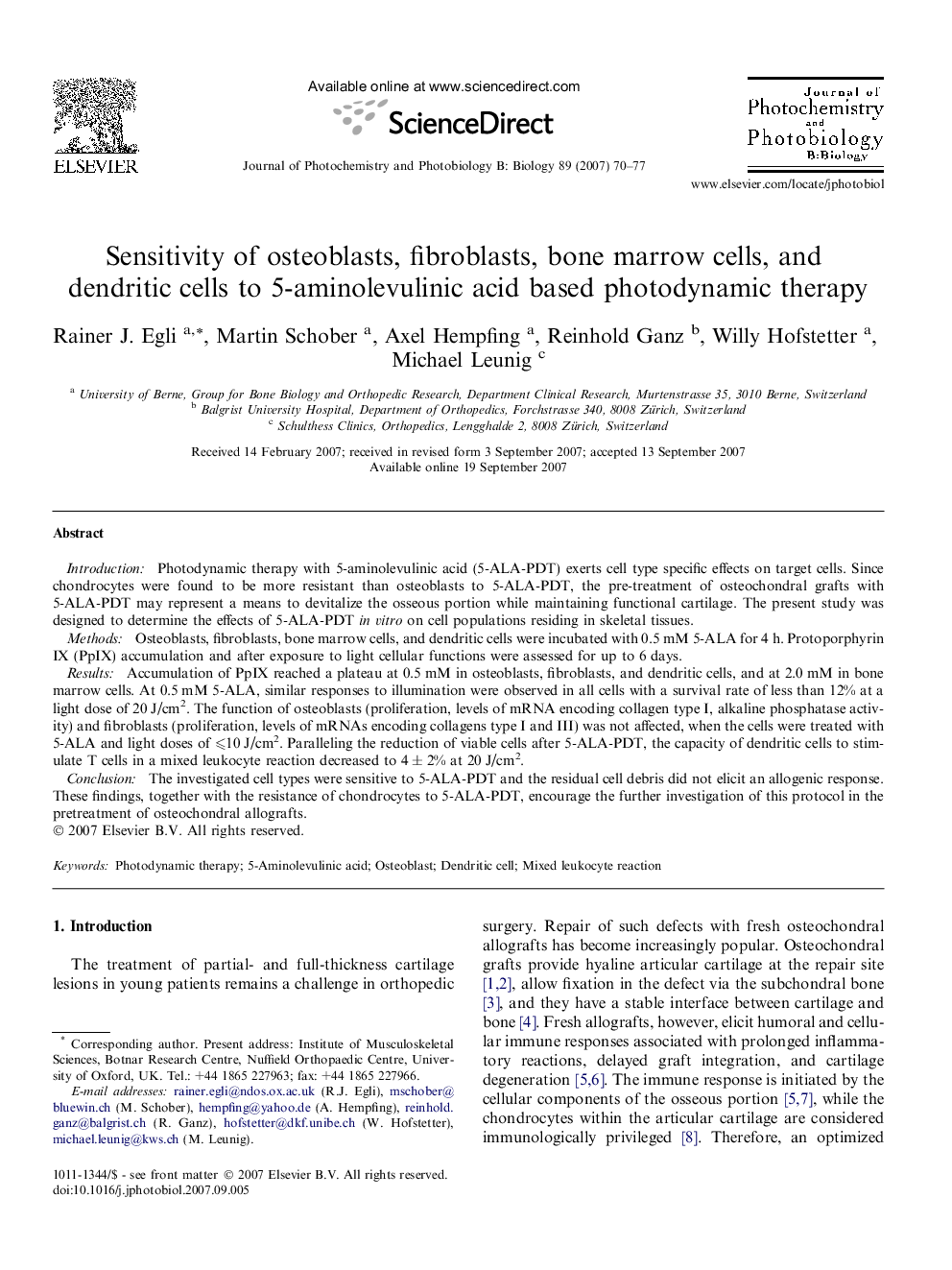| Article ID | Journal | Published Year | Pages | File Type |
|---|---|---|---|---|
| 30686 | Journal of Photochemistry and Photobiology B: Biology | 2007 | 8 Pages |
IntroductionPhotodynamic therapy with 5-aminolevulinic acid (5-ALA-PDT) exerts cell type specific effects on target cells. Since chondrocytes were found to be more resistant than osteoblasts to 5-ALA-PDT, the pre-treatment of osteochondral grafts with 5-ALA-PDT may represent a means to devitalize the osseous portion while maintaining functional cartilage. The present study was designed to determine the effects of 5-ALA-PDT in vitro on cell populations residing in skeletal tissues.MethodsOsteoblasts, fibroblasts, bone marrow cells, and dendritic cells were incubated with 0.5 mM 5-ALA for 4 h. Protoporphyrin IX (PpIX) accumulation and after exposure to light cellular functions were assessed for up to 6 days.ResultsAccumulation of PpIX reached a plateau at 0.5 mM in osteoblasts, fibroblasts, and dendritic cells, and at 2.0 mM in bone marrow cells. At 0.5 mM 5-ALA, similar responses to illumination were observed in all cells with a survival rate of less than 12% at a light dose of 20 J/cm2. The function of osteoblasts (proliferation, levels of mRNA encoding collagen type I, alkaline phosphatase activity) and fibroblasts (proliferation, levels of mRNAs encoding collagens type I and III) was not affected, when the cells were treated with 5-ALA and light doses of ⩽10 J/cm2. Paralleling the reduction of viable cells after 5-ALA-PDT, the capacity of dendritic cells to stimulate T cells in a mixed leukocyte reaction decreased to 4 ± 2% at 20 J/cm2.ConclusionThe investigated cell types were sensitive to 5-ALA-PDT and the residual cell debris did not elicit an allogenic response. These findings, together with the resistance of chondrocytes to 5-ALA-PDT, encourage the further investigation of this protocol in the pretreatment of osteochondral allografts.
